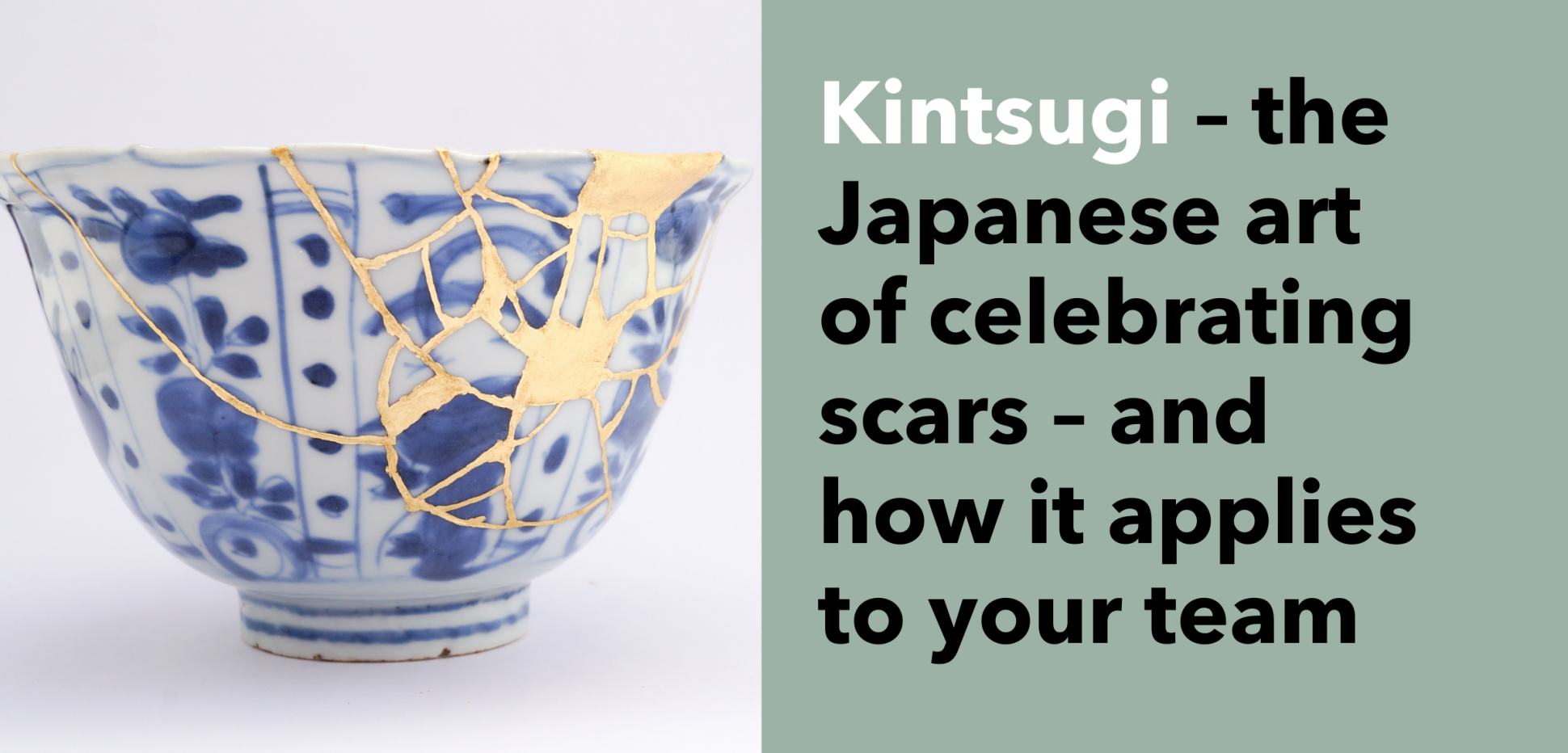Psychological safety and celebrating scars

Kintsugi is the Japanese art of repairing broken pottery with beautiful golden joinery and finding new beauty in imperfection. This process to keep something treasured and of value by mindfully bringing back together shattered pieces, adds additional storylines to the pieces history. These repair “scars” help us understand that broken objects are not something to throw away, but rather embrace and a source of pride.
But what does this ancient art have to do with teams?
For us, it’s all about the importance of facing into our issues as a team – when trust has been broken or team members have felt psychologically unsafe – and actively repairing them together, making you a stronger and more resilient team as a result.
Ultimately this comes down to a constant focus, on the part of every member of the team, on nurturing the precious team commodity of psychological safety.
The concept of creating safe spaces is not a new phenomenon. Here at Sheppard Moscow, we’ve been working with our clients to drive open and honest conversations, encourage healthy disagreement and embrace vulnerability, for over 50 years. But what is new is the widespread acceptance of these concepts under the, now, almost universally understood, umbrella term of psychological safety. Up until quite recently it was considered inappropriate, or even scary, for anything to do with psychology or the human psyche to be brought into workplace conversations – but something has shifted in our culture to make this more acceptable, and importantly, more comfortable for us to openly discuss. We are happier to show and share our scars, or at least in those organisations where psychological safety is nurtured and repaired.
More and more we see a much greater focus on psychological safety, to the point where leaders and teams expect it to be a much more intrinsic part of corporate life – and to be called out when the cracks are starting to show.
Take, for example, some of the conversations we’ve had with our clients of late. In one global institution, leaders and managers are publicly demanding a higher level of psychological safety in their learning and development processes. We’ve also heard from another leader who is frustrated that despite her best efforts, the team members themselves are not helping to grow the sense of psychological safety in the team. This reminds us of Aoife’s recent article on the psychological safety blanket and the notion that it’s not simply down to the leader to create the right environment, but for individual team members to actively contribute to the creation of safety across their team. We are all here to make sure the whole is looked after and put back together when it may have broken.
We know from our experience of working with teams, and being in teams ourselves, that psychological safety is something that has to be worked on constantly; and like trust, it can take years to build up. And yet, it can be eroded instantaneously, if we’re not careful. An off-hand comment can undermine all the efforts made to build connection and safety in a team – and it can only be rebuilt through acceptance of our human frailties, honesty and on-going dialogue.
So how can leaders turn psychological safety into an everyday endeavour so that the leadership and team behaviours that enable it are truly part of the team culture? Also, how do they convey the concept that our scars, our vulnerability, are something to be celebrated rather than hidden from view?
For us, the key lies in contracting concretely for our individual needs and generating a state of joint accountability for meeting those as a team. We need to ask questions, listen more deeply, pay attention to what is being left unsaid, look for clues and slow down to see what is really happening between and within each of us as teammates. It is about empowerment of the team to own for themselves the shaping of the culture of the team, rather than all of the responsibility lying with the leader.
Psychological safety requires constant attention. It needs to permeate through the team at every moment, in every exchange, in every email. It must be ever-present. And each of us has a responsibility to make that so. Nonetheless, leaders have a particular role to play in modelling it for others - through more transparency, more intentional conversations about inclusion and belonging, and by exploring what psychological safety looks and feels like person by person, and for their team as a whole.
And yet, we all have a responsibility to repair ourselves, and one another, when things inevitably go awry – we need to be brave in naming it when we’ve been undermined, asking for feedback, cultivating our self-awareness about our impact, developing our empathy, reflecting on our feedback – so that we can make our teams stronger, and more beautiful for these “scars”.
If you have enjoyed this article, you may also found the following useful
Psychological safety and performance reviews
Creating a psychological safety blanket for you and your teammates

 Ally Salisbury
Ally Salisbury  Aoife Keane
Aoife Keane 

